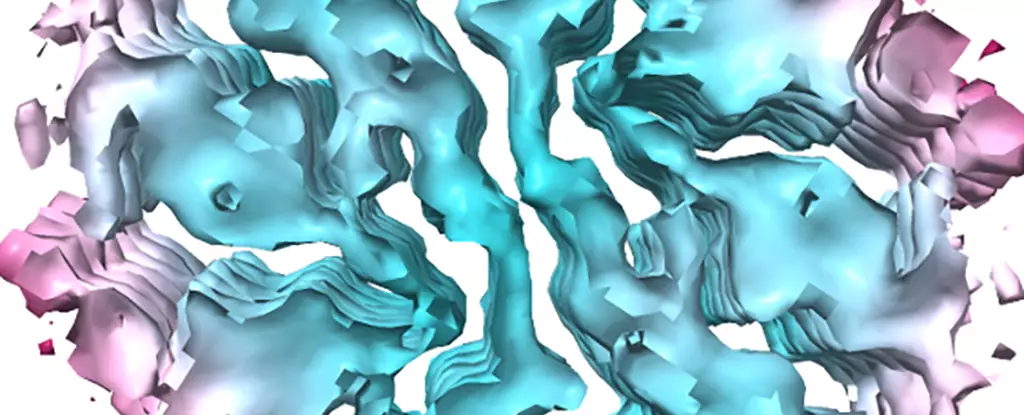Alzheimer’s disease is one of the most pressing health crises of our time, affecting millions of individuals and their families globally. Central to the pathology of Alzheimer’s and other neurodegenerative diseases are tau proteins, which, when improperly folded, can lead to irreversible cellular damage. Unlike prions, which are infectious proteins capable of catalyzing the misfolding of similar proteins, tau can exhibit prion-like behavior—spreading its damaging effects. The presence of abnormal tau aggregates, known as fibrils, is deeply linked to neurodegenerative conditions, making the study of these proteins particularly crucial for developing effective treatments.
Emerging research has recently allowed for the replication of these problematic tau structures in vitro. This breakthrough has the potential to revolutionize how we understand and interact with the mechanisms of neurodegeneration.
Synthesized Models: A Leap Toward Clarity
In a pioneering study led by researchers from Northwestern University and UC Santa Barbara, scientists have succeeded in synthesizing a miniaturized version of tau that exhibits key characteristics associated with neurodegenerative diseases. This “mini prion,” as described by lead researcher Songi Han, presents an innovative approach by simplifying the complexities associated with studying full-length tau proteins. This simplification is not just about size; it also enhances the researchers’ ability to manipulate this synthetic model in the laboratory.
The significance of this advancement cannot be overstated. Controlling the characteristics of these mini tau prions has opened doors to a myriad of experiments that were previously constrained by the unpredictability associated with naturally occurring proteins. By enabling researchers to manipulate these proteins systematically, the synthesis of mini tau prions could lead to a better understanding of the fundamental processes that drive diseases like Alzheimer’s.
Water’s Role: The Hidden Influence on Misfolding
One of the intriguing findings from the study revolves around the structural changes in water surrounding the tau protein fragments, influenced by specific mutations. Han’s insights reveal that water, despite being a simple molecule, plays a crucial role in protein folding and interactions. Researchers discovered that when specific mutations occurred in the tau peptide, this elicited a more structured arrangement of water molecules around the mutation site. This goes against the common notion of water being just a passive medium; instead, it highlights the active role that the surrounding environment plays in biological processes.
Understanding how mutations lead to altered water structures opens avenues for further exploration. It suggests that misfolding may not only depend on the inherent properties of the tau protein itself but also on the interactions with the molecular environment. This nuanced perspective is essential for developing strategies aimed at mitigating the misfolding of tau in the first place.
Why This Research Matters
The implications of having a controlled, synthetic model of tau proteins extend beyond academic curiosity. Currently, most studies rely on post-mortem brain samples from individuals who have suffered from various neurodegenerative diseases. These samples, while invaluable, are limited by their scarcity and variability. The introduction of synthetic tau prions provides a reliable and reproducible means to study the behavior of these proteins and their role in disease—an essential step toward finding effective preventive and therapeutic measures.
Moreover, while tau aggregates are not conclusively established as the primary cause of Alzheimer’s and similar disorders, they remain strong candidates in the complex interplay of factors driving neurodegeneration. Researchers believe that understanding the exact mechanics behind tau misfolding is crucial. Therefore, this synthetic tau model could help identify new pathways and mechanisms that lead to disease onset and progression.
Future Directions in Neurodegenerative Research
The creation of self-propagating tau fragments marks a critical evolution in the quest to decipher tauopathies. By producing models that recreate the unique fibril structures characteristic of each tau-associated disease, researchers are better equipped to understand the nuances of how Alzheimer’s may manifest differently from other related conditions. This tailored approach is set to enhance our comprehension of the diseases and potentially lead to personalized therapeutic strategies.
The synthesis of tau proteins in a laboratory setting represents not just a significant scientific achievement but a beacon of hope for millions affected by neurodegenerative diseases. As we continue to unravel the complexities surrounding tau misfolding, we inch closer to unveiling the mysteries of Alzheimer’s and its intersecting pathologies.

